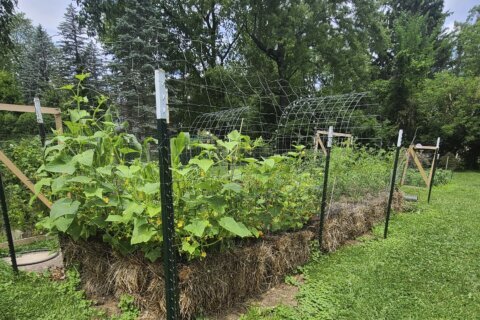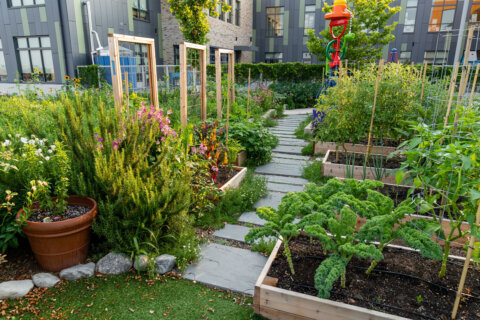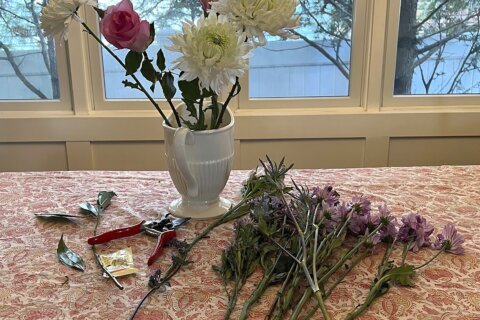When we want to add color to the garden, most of us set our sights on flowers. But many leaf-forward plants can outlast and even outcompete those with colorful blossoms.
For starters, foliage plants don’t wax and wane or have a limited bloom time. In addition, many can brighten up shady spots that don’t offer enough sunlight for flowers. And they tend to be lower maintenance since they don’t need pruning or deadheading to keep blooming or look their best.
Foliage plants can add depth, texture and contrast to beds and containers, serving as focal points or backdrops for other plants. There are many species, varieties and cultivars to choose from.
All of these perennial plants can be treated as annuals outside of their hardiness zones, except for the ornamental grasses, which would likely be impractical and too expensive to plant for a single season.
GROUND COVERS
Consider Heuchera, aka coral bells or alumroot, which is equally (if not primarily) valued for its large, heart-shaped or rounded frilly leaves as for its tall flower stalks that bloom from spring through summer. It’s available in a dizzying array of leaf colors, from muted green and cream to bright chartreuse and bold maroon, copper, red and purple. There are also variegated varieties and some with distinct leaf veins. You can plant Heuchera as a single specimen or as a ground cover in part shade to part sun (perennial in zones 4-9).
Siberian bugloss (Brunnera macryphylla) is another beautiful foliage plant that works well as a groundcover. Among the choices are “Jack Frost,” a variety that boasts silvery foliage that contrasts nicely with surrounding greenery, and “Jack of Diamonds,” which has giant, overlapping, heart-shaped leaves with dark green veining (perennial in zones 3-8).
Sweet potato vine, often planted at the outside edge of containers for a spilling effect, will quickly cover ground (or a trellis) with vining heart-shaped, lobed or lacy green, chartreuse, purple, green, red, bronze, burgundy or purple leaves (perennial in zones 9-11).
And Artemisia, also known as mugwort or wormwood, adds an attention-grabbing, silvery touch to beds and containers, particularly in moon gardens, for which plants are selected for their ability to “glow” in the moonlight. The fragrant plant also resists deer and rabbit browsing (perennial in zones 3 or 4 through 8, 9 or 10, depending on variety).
MID-SIZE MARVELS
The polka dot plant (Hypoestes phyllostachya) is a party in a pot (or garden bed), its vibrant foliage splashed with pink, white or red blotches or dots. Typically growing 12 to 18 inches tall, with some varieties reaching 3 feet, the plant thrives best in part sun (perennial in zones 10-11).
Angel wings (Caladium), prized for their intricately patterned, arrowhead-shaped foliage, can grow up to 2 feet tall. Each plant sends up individual leaves of pink, red, white and/or green, their veins and, often, colored margins brightening partially shady spots (perennial in zones 8-12).
With hundreds of varieties in different heights, colors, leaf sizes and shapes, there’s likely a Coleus for every garden or container. Most prefer shade, some can tolerate sun, and all quickly grow into dense clusters to provide near-instant gratification (perennial in zones 10-11).
STATEMENT PLANTS
Pink Muhly grass (Muhlenbergia capillaris), native to Eastern North America, shines in fall with its pink, airy inflorescences, which technically are flowers, but not in the colloquial sense. In winter, its plumes fade to silver-gray. At just 2-3 feet tall and wide, you can plant one as a standalone or line several up to create a short hedgerow (zones 6-9).
Little bluestem (Schizachyrium scoparium) is a 3-foot-tall delight with gray-green blades and dramatic red, purple and orange autumn colors that persist through winter. It’s also a North American prairie native that serves as a larval host for several skipper butterfly species (zones 4-9).
Just about anyone can add a tropical flair to beds and borders with “Black Magic” elephant ears (Colocasia). The traffic-stopping plant quickly grows to a height of 3-5 feet by midseason. Its nearly black, deep-purple, heart-shaped leaves often surpass 2 feet in length. Outside the plant’s hardiness range, gardeners can dig up and store its tuber in autumn for replanting the following spring (zones 9-11).
___
Jessica Damiano writes regular gardening columns for the AP and publishes the award-winning Weekly Dirt Newsletter. You can sign up here for weekly gardening tips and advice.
___
For more AP gardening stories, go to https://apnews.com/hub/gardening.
Copyright © 2024 The Associated Press. All rights reserved. This material may not be published, broadcast, written or redistributed.







